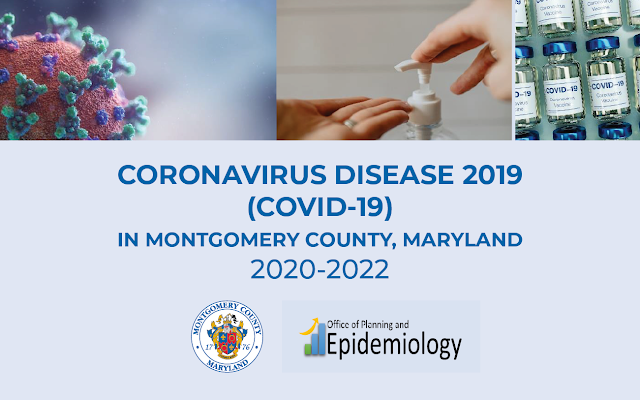
Health officials this week released the COVID-19 Epidemiology Surveillance Report for Montgomery County. The report, Coronavirus Disease 2019 (COVID-19) in Montgomery County, Maryland 2020-2022, highlights disease burden of COVID-19 among residents, details how Montgomery County compares to the State and the U.S., and details how the County’s Department of Health and Human Services’ (DHHS) programs respond to the pandemic.
The report provides statistics and epidemiology profiles of COVID-19, including infections, testing, hospitalization, deaths, vaccinations, outbreaks and contact tracing. According to the CDC’s COVID-19 community level map, as of March 2022, when the report’s data were last updated, transmission in Montgomery County was in the “low” category. As of late June, the transmission level in the community is in the “medium” category. This is likely to change as new variants and sub-lineages continue to evolve over time.
“Montgomery County fares better than the State and national averages for most indicators related to COVID-19, but vulnerable population subgroups and communities disproportionally impacted by the pandemic remain a top priority to address through the lens of social determinants,” said acting County Health Officer James Bridgers. "Our goal is to implement the evidence-based and data-driven approaches to enhance our programs and services to respond to the pandemic proactively to meet the public health needs of Montgomery County."
Key findings of the report include:
- Female residents aged 20 to 34 years, non-Hispanic black residents aged 20 to 24 years, and Hispanic residents aged 20 to 64 have the highest cumulative case rates.
- Test positivity rates were highest for the first and third waves of the pandemic.
- The highest number of monthly positive cases occurred in December 2021 and January 2022.
- There have been 2,039 deaths in Montgomery County since the start of the pandemic, with the highest number of monthly deaths occurring in April and May 2020.
The report completes a core function of public health: surveillance and data collection, analysis and interpretation for disease prevention and control. The goal is to present the data to the community so that it can serve as a source of knowledge, bring attention to areas of success and weakness, and potentially serve as a basis for further analysis by stakeholders to design appropriate programming and interventions to address gaps in outcomes.
For the latest updates on COVID-19, visit the COVID-19 website. A downloadable report is available on the Department of Health and Human Services' website.
